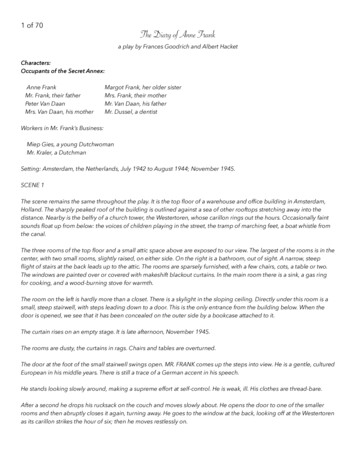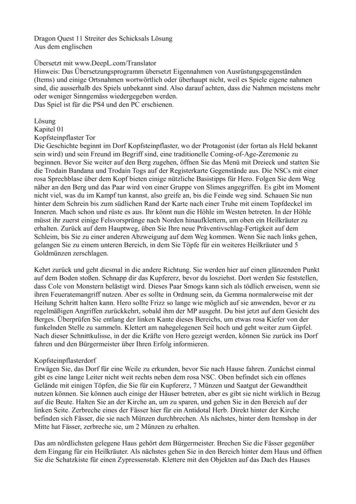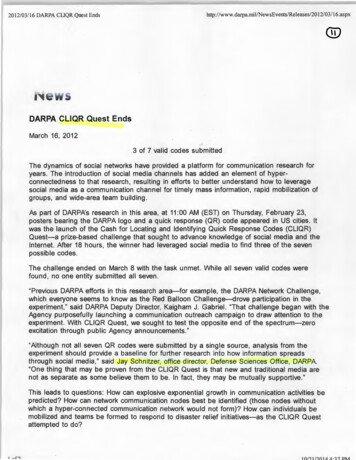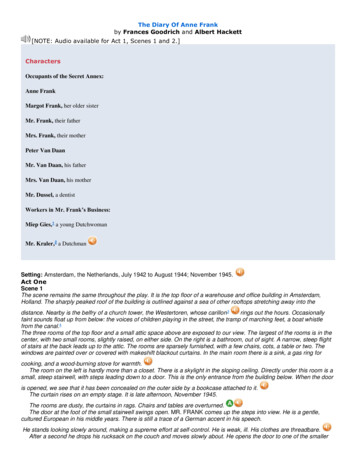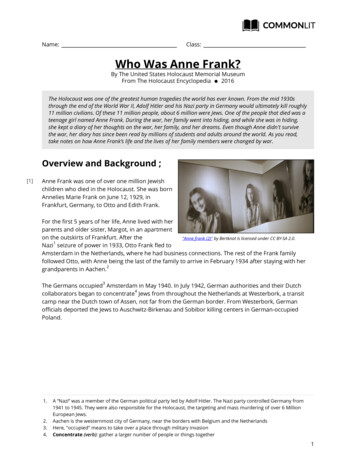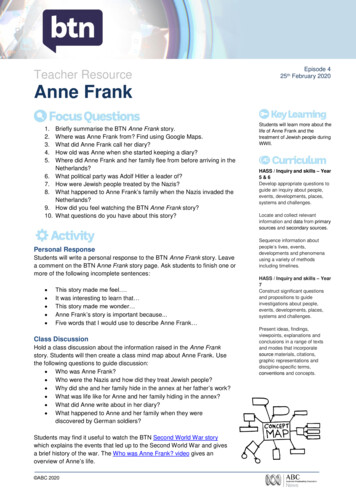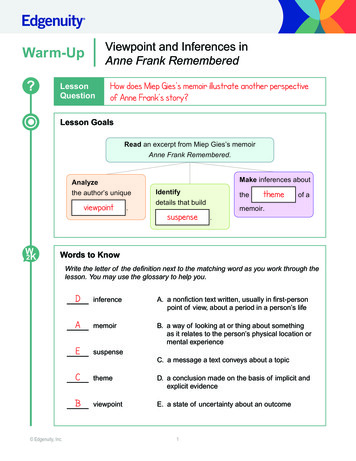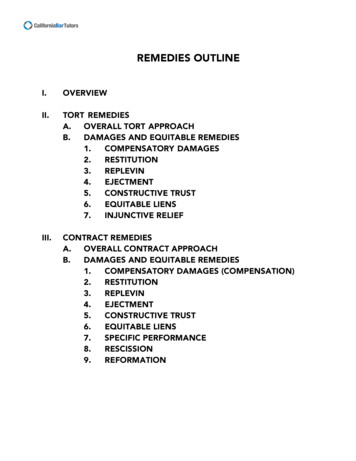
Transcription
REMEDIES OUTLINEI.OVERVIEWII.TORT REMEDIESA.OVERALL TORT APPROACHB.DAMAGES AND EQUITABLE REMEDIES1.COMPENSATORY CTIVE TRUST6.EQUITABLE LIENS7.INJUNCTIVE RELIEFIII.CONTRACT REMEDIESA.OVERALL CONTRACT APPROACHB.DAMAGES AND EQUITABLE REMEDIES1.COMPENSATORY DAMAGES CONSTRUCTIVE TRUST6.EQUITABLE LIENS7.SPECIFIC PERFORMANCE8.RESCISSION9.REFORMATION
I.OVERVIEW1. Determine the area of substantive law (may be more than one,normally torts, property or contracts)2. Make sure Plaintiff has a case and a relief is needed.3. Determine appropriate remedies (based on available remedies forthat substantive area of law).1. Discuss legal remedies first.2. Discuss restitutionary remedies3. Discuss pure equitable remedies.**Discuss ALL potentially available remedies unless the question asksfor only a specific type of remedy.**II.TORT REMEDIESA. OVERALL TORT APPROACH1. Has Plaintiff been/being injured? ANSWER: CompensatoryDamages2. Has Defendant derived an Unjust Enrichment? ANSWER:Restitutionary Damages3. Does Plaintiff want the property back? ANSWER: Replevin,Ejectment, Specific Performance4. Does Plaintiff need an Injunction? ANSWER: Preliminary,TRO, PermanentREMEDIES 2
B. DAMAGES AND EQUITABLE REMEDIES1. COMPENSATORY DAMAGES (COMPENSATION)a. Plaintiff is entitled to compensatory damages to put him/herin the position he/she would have been had the wrong notoccurred.b. Must Show:1. Causation: The injury must have been caused by thetortious act (“BUT FOR ” test, i.e., “but for the tortiousaction, the injury would not have happened”);2. Foreseeability: The injury must been foreseeable at thetime of the tortious act (“proximate cause”); and3. Certainty: The damages cannot be too speculative.i. Non-Economic Damages (general pain and suffering,disfigurement) – Certainty requirement does not apply.Only required for economic losses (special damages).ii. Future Damages: “All or Nothing Rule”- For futuredamages, Plaintiff must show that the damages “aremore likely to happen than not.” Failure to demonstratethis will result in no award.1. Discuss probability of future events occurrence2. Lost Profits3. Historical Records helps – i.e., no new business4. Medical ExpensesREMEDIES 3
4. Unavoidability: The Plaintiff must take reasonable steps tomitigate the damage. Damages limited to those that couldnot reasonably have been avoided.**Calculation: Single lump sum payment, discounted topresent value. No accounting for inflation.**c. Nominal Damages: Where the Plaintiff has no actual injury,the court may award nominal damages to serve to establish orto vindicate the Plaintiff’s rights.d. Punitive Damages: Where the Plaintiff’s injury results from“willful, wanton, or malicious conduct” on the part of theDefendant, the court may award punitive damages to punishthe Defendant. Plaintiff must first have been awarded compensatory,nominal, or restitutionary damages. Calculation: Must be relatively proportional to actualdamages. USSC: single digit multiple of actualdamages unless the Defendant’s conduct is extreme.2. RESTITUTION1. Restitutionary Damages: Where the Defendant has beenunjustly enriched, the court may award damages based on thebenefit to the Defendant.2. Calculation: The amount is calculated based on the value of thebenefit. However, where both compensatory and restitutionarydamages are available, Plaintiff cannot get both. Instead, he/shemust make an election of the two. Generally, the Plaintiff shouldbe awarded the larger sum of the two.REMEDIES 4
3. No Restitution for Encroachment or Nuisance.3. REPLEVIN1. Action to recover possession of specific personal property.2. Must show:a. Plaintiff has a right to possession; andb. there is wrongful withholding by Defendant.3. Timing: As long as Defendant is still in possession, Plaintiff canrecover the chattel before trial. (Sheriff recovers property.) But, to do so, Plaintiff will have to post a bond. And, Defendant may defeat an immediate recovery byposting a re delivery bond. Through which, theDefendant can keep the chattel until after the trial.4. Loss of Use: Almost always coupled with damages for lost useOR benefit to Defendant during time of wrongful withholding.5. Bona Fide Sale: No recovery if sale to a Bona Fide Purchaser4.EJECTMENT1. Action to recover possession of real property (land)2. Must show:a. Plaintiff has a right to possession; andb. There is a wrongful withholding by Defendant. (Onlyavailable against Defendant who has possession of theproperty.)REMEDIES 5
3. Usually coupled with damages for lost use of the benefitduring the wrongful withholding. (Note, ejectment does not giverise to punitive damages.)5. CONSTRUCTIVE TRUST1. Equitable remedy imposed by the courts when the retention ofproperty by Defendant (wrongdoer) would result in unjustenrichment. Defendant serves a “trustee” and must return theproperty to Plaintiff.2. Legal remedies must be inadequate (e.g., the Defendant isinsolvent or the property is unique). Note: Land is always unique. Personal property is typicallynot unique unless it:o Is one of kind or very rare.o Has personal significance to Buyer.3. Tracing: Plaintiff can follow the property to whatever form ittakes, as long as the trust re can be identified.4. Bona fide purchasers prevail over Plaintiff.5. Plaintiff prevails over unsecured creditors.6. EQUITABLE LIEN1. Where Defendant has improperly acquired title to a property, anequitable lien allows the court to order an immediate sale of theproperty, and the monies received will go to the Plaintiff.2. Must show:a. Defendant misappropriated Plaintiff’s property creating aREMEDIES 6
debt or obligation to pay;b. Plaintiff’s property can be traced to property held byDefendant; andc. Retention by Defendant would result in unjust enrichment.3. Sale Price and Damages. If the proceeds from the sale are lessthan the fair market value of the property when it was taken, adeficiency judgment will issue for the difference and can be usedagainst Defendant’s other assets.4. Where misappropriated money is used to improve property(e.g., house remodel), only an equitable lien is available.5. Same rules as constructive trusts:a. Tracing allowed.b. Bone fide purchaser prevails.7. INJUNCTIVE RELIEF1. Temporary Injunctive Relief: To recover to recover temporaryinjunctive relief, Plaintiff must meet a two part test:1.Irreparable Injury: Plaintiff must show that without theinjunction, she will incur irreparable injury while waiting for afull trial on the merits.i. Balancing Test: harm to Plaintiff if injunction is deniedv. harm to the Defendant if injunction is granted.ii. Where Defendant created the hardship – even ifsubstantial – balance likely to weigh in Plaintiff’sfavor.2.Likelihood of success: Plaintiff must show that he/she has astrong likelihood of success on the merits. The court will lookto the probability of this success.REMEDIES 7
i. This is not an inquiry on success of obtaining apermanent injunction.ii. The court should also impose a bond requirement onthe Plaintiff to reimburse the Defendant if theinjunction injured him/her and the Plaintiff does notsucceed.2. Permanent Injunctive Relief: Plaintiff must meet a five part test:[I Put Five Bucks Down]1. Inadequate Legal Remedy: Money damages may be toospeculative; Defendant may be insolvent; the sheriff may beunable or unwilling to enforce a replevin or ejectmentaction.2. Property Interest/Protectable Interest:i. Traditional View: Equity will grant relief only wherethere is a protectable property right involved.ii. Modern View: Any protectable interest will suffice.3. Feasibility of Enforcement: Only an issue with mandatoryinjunction. Enforcement problems may stem from: (1) thedifficulty of supervision or (2) concern with effectivelyensuring compliance.4. Balancing of Hardships: Plaintiff’s benefit v. Defendant’shardship the public’s hardship [But, if the Defendant’sconduct was willful, no balancing]5. Defenses, lack thereof:i. Laches: Where there has been an unreasonable lapseof time between when the Plaintiff learned of theinjury and when the Plaintiff filed the lawsuit, and thatREMEDIES 8
lapse of time is prejudicial to the Defendant, lacheswill cut off the right to injunctive relief (but not damages).ii. Unclean hands: The persons seeking equitable reliefmust not be guilty of any improper conduct that isrelated to the lawsuit.iii. Impossibility: it would be impossible for theDefendant to carry out the terms of the injunction.iv. Free Speech: Injunction may be denied on freespeech grounds.3. Injunctive Relief IssuesA. Crimes. Equity will not enjoin crimes. Recharacterize as a tort. Exception for nuisance/public nuisance and partialexception for crime that is also a tort.B. Who is bound? Parties, agent/employees, and others acting inconcert w/notice.C. Erroneous Injunctions. Injunctions must be complied with untilmodified or dissolved.D. Contempta. Civil Contempt – To Coerce Fines (money) to coerce Imprisonment (Defendant holds keys to the jailhousedoor)b. Criminal – To Punish Fines (money) to punish Imprisonment – Remain in jail for set amount of time(Note, Constitutional safeguards apply.)** Note, no contempt for failing to comply w/ judgment,REMEDIES 9
unless child support or alimony.E. Dispossession of Loan. Injunction not allowed since ejectmenti s adequate.F. Encroachment. Restitution is not allowed. Injunctions allowed.G. Nuisance. Consider traditional damages, permanent damages,and past damages. Restitution – Not allowed.H. Personal Injury.a. Special Damages – Economic losses (more certainty)b. General damages – Non economic losses (no certaintyrequired)c. Look to mitigation of damages.I. Fraud. Some jurisdictions use benefit of bargain, some applyout of pocket loss. Punitive damages allowed.III.CONTRACT REMEDIESA. OVERALL CONTRACT APPROACH1.Has Plaintiff been/being injured? Answer: ExpectationDamages2.Has Defendant derived an Unjust Enrichment? Answer:Restitution3.Does Plaintiff want the property back? Answer: Replevin,Ejectment, Constructive Trust, Equitable LienREMEDIES 10
4.Does Plaintiff want the Contract performed? Answer: SpecificPerformance5.Does Plaintiff want the Contract ripped up? Answer: Rescission6.Does Plaintiff want the Contract re-written? Answer:ReformationB. DAMAGES and EQUITABLE REMEDIES1. COMPENSATORY DAMAGES (COMPENSATION)a. Based on injury to the Plaintiffb. Requires: (1) causation; (2) foreseeability (tested at the timeof formation; (3) certainty; (4) unavoidability (mitigation)c. Consequential damages: Available for related damagesthat were foreseeable at the time of formation (e.g.,damage to reputation).d. Incidental Damages: Available for “hassle” involved indealing with breach.e. Seller breaches a land sale contract: CompensatoryDamages out of pocket loss OR benefit of the bargainf. Nominal damages are also allowed. But, punitivedamages are NOT allowed (Note: If Defendant’s conduct iswillful, characterize as a tort as well, so you can get punitivedamages.)g. Liquidated damage clauses are permissible, if they arevalid. Must Show:i. Damages are difficult to ascertain at the time ofcontract formationii. Estimate was a reasonable forecast of what thedamages would be. (If liquidated damages are tooREMEDIES 11
high, they will be viewed as a penalty.)iii. Result: If valid only liquidated damage amount.Ifinvalid dismiss liquidated damages clause anddetermine actual damages. (Can’t recover bothcompensatory and liquidated damages. But can getother remedies outside of actual damages, such asspecific performance.)2. RESTITUTIONa. Unenforceable Contracti.ii.iii.iv.If a contract is unenforceable AFTER the Plaintiff hasperformed (e.g., mistake, capacity, illegality), Plaintiff canget restitutionary damages for property/money given toDefendant, or for services rendered for Defendant for theVALUE of the BENEFIT.Not necessary to find that the Defendant actuallybenefited, only that Defendant received a benefitIf the value of the services is greater than the Contractrate, Plaintiff can still recover that value.Plaintiff can get specific property back if it is unique, orDefendant is insolvent.b. Quasi-Contract. Plaintiff awarded the reasonable value ofDefendant’s ill gotten gain or the difference between thepresent value of the good less the value before the benefitconferred by Plaintiff.REMEDIES 12
c. Breach of Contract Where Plaintiff is the non breaching party:o Plaintiff may recover restitutionary damages forproperty/money given to, or services rendered forDefendant for the VALUE of the BENEFIT.o Plaintiff can get the property back if it is unique orDefendant is insolvent. Where Plaintiff is the breaching party:o Traditional View – No recovery allowed.o Modern View – Recovery allowed, but limited toContract price and must be offset to reflectDefendant’s damages. Cannot be greater thanContract rate.3. REPLEVIN (See above, same principles available in contractdisputes.)4. EJECTMENT (See above, same principles available in contractdisputes.)5. CONSTRUCTIVE TRUST See above, same principles available incontract disputes.)6. EQUITABLE LEAN See above, same principles available incontract disputes.)7. SPECIFIC PERFORMANCEa. Five Part Checklist1. Inadequacy of Legal Remedies. Damages may beinadequate because: (1) they’re speculative, (2) DefendantREMEDIES 13
is insolvent; (3) multiple suits are necessary; and (4) thething bargained for is unique (tested at the time oflitigation, not during contract formation). Liquidateddamage clause is inadequate.2. Definite and Certain Terms. Terms of the Contract mustbe sufficient certain to constitute a valid Contract.3. Feasibility of Enforcement. Is this possible? Too muchcourt supervision needed?4. Mutuality of Remedy: must show the other side can alsosecure performance. Only an issue where Plaintiff lackscapacity. Court will reject mutuality if it feels secure thatPlaintiff can and will perform.5. Lack of Defenses: Unclean hands; laches;unconscionability; mistake; misrepresentation; equitableconversion (sale to bona fide purchaser); SoF (satisfied if (i)part performance (ii) in reliance on Contract)).b. Special Problems1. Deficiencies Fact Pattern Seller as Plaintiff: CAN enforce Contract if the defect isminor. CANNOT enforce Contract if the defect is majorunless the seller can cure the Contract before closing. Buyer as Plaintiff: CAN enforce the Contract even if thedefect is major (abatement – court will lower thepurchase price to take into account this defect).CANNOT enforce the Contract if the defect is verymajor.REMEDIES 14
2. “Time of the Essence” Clause Includes forfeiture provision. Equity abhors forfeiture.Avoid forfeiture (and award specific performance), where:(1) loss to the seller is small; (2) tardiness is de minims;(3) waiver – seller has accepted late payments in thepast; (4) buyer would suffer undue hardship. Modern trend: Courts will give Plaintiff restitutionaryrelief if specific performance were not granted. But, ifbuyer has not made even an initial payment – theforfeiture clause will be strictly enforced.3. Equitable ConversionReal property interest of the buyer and seller areswitched upon execution of the land Contract. Thus, the buyer will be regarded as having the realproperty interest (the specifically enforceable right to theland). Seller will be regarded as having the personal propertyinterest (the specifically enforceable right to the money). 4. Covenants Not to Compete (Employment Contracts /Personal Services Contracts) Pose enforcement problems Can be viewed as involuntary servitude Two-Part Test for Validityo The covenant must protect a legitimate interesto The covenant must be reasonable in both isgeographical and durational scope.REMEDIES 15
8. RESCISSIONA. Equitable Remedy whereby one who is fraudulently inducedinto entering a Contract may rescind Contract.B. Two Step Analysis:1. Determine if there are grounds for the rescission (improperformation of contract):a. Mistakeb. Misrepresentationc. Coerciond. Undue Influencee. Lack of Capacityf. Failure of Considerationg. IllegalityC. Mutual Mistake of Fact Mutual mistake of material fact grounds Mutual mistake of collateral fact grounds Unilateral mistake grounds UNLESS the non mistakenparty knows or should have known of the mistake.D. Defenses: Determine if there are valid defenses: Uncleanhands; laches (negligence is NOT a valid defense).E. Special Problems:a.Timing and Election of Remedies If Plaintiff sues for damages first, rescission is NOTallowed. If Plaintiff sues for rescission first, damages AREREMEDIES 16
allowed.b.Availability of Restitution: If a Plaintiff who is entitled torescission has previously rendered performance on theContract, he/she can get compensated for it or get theproperty back via restitution.c.Legal Rescission: Plaintiff accomplishes this by her ownactions. Plaintiff gives notice and tenders back anyconsideration received. Plaintiff then sues for restitutionfor anything given to Defendant.9. REFORMATIONa. The Court may modify a written agreement to conform w/ theparties’ original understanding.b. Three Steps:1. Determine if there is a valid contract.2. Determine if there are grounds for reformation.a. Mutual mistakeb. Unilateral mistake IF non mistaken party KNOWS ofmistakec. Misrepresentation3. Determine if there are valid defenses: unclean hands,laches.REMEDIES 17
REMEDIES 2! I. OVERVIEW 1. Determine the area of substantive law (may be more than one, normally torts, property or contracts) 2. Make sure Plaintiff has a case and a relief is needed. 3. Determine appropriate remedies (based on available remedies for that substantive area of law). 1. Discuss legal remedies first. 2. Discuss restitutionary .
